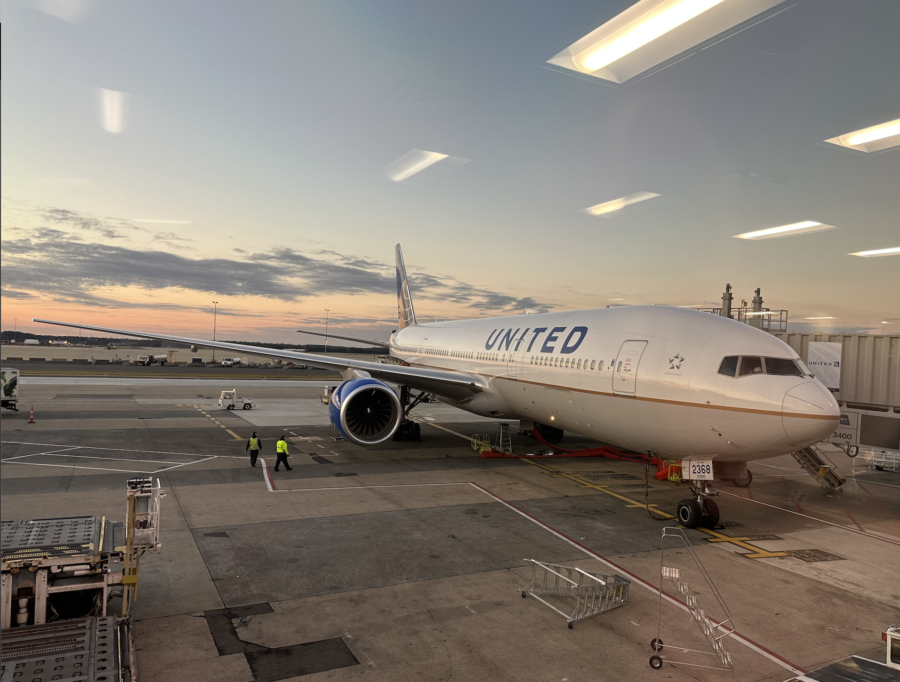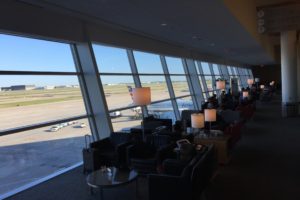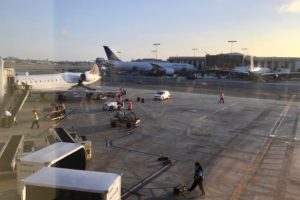Capacity Flooding as a Competitive Response in the Airline Industry
This past spring, I took a class in college at the University of Chicago on Industrial Organization, which essentially is an economics class that models the strategies that firms use when competing with each other. For this class, we were assigned to write a short paper where we would apply the economic methods that we learned about in class to model a real-life scenario that we find interesting.
I perhaps unsurprisingly decided to base my paper on a phenomenon that happens in the airline industry, although the economic concepts can also be applied to other industries. In the paper, I examine a particular route, Washington Dulles to San Diego, where Alaska Airlines launched a route competing directly with United, which was the only airline to offer it at the time. About two days later, United announced that it would significantly increase its capacity on the route by adding a fourth daily flight on its high-density 777-200s. This action was a defensive competitive response to Alaska Airlines. The goal of my paper was to examine when it might be profitable for airlines to flood the market with excess capacity which wasn’t previously profitable to convince or signal the other airline to leave the market.
Interestingly, United has, for the most part, kept its high-density 777s on the route and Alaska has kept operating the flight, indicating that perhaps in a competitive market, it is most profitable to operate such at first seemingly “excess” levels of capacity, or perhaps that United has a longer-term competitive strategy in trying to convince Alaska to leave the market. This concept of market flooding can also be applied to many other routes in the airline industry, such as when airlines generally attempt to introduce service at an airport where one airline has a hub (and thus has more market power there), and then the hub airline either launches or increases service on the same route as the challenging airline.
The paper is rather math-heavy and uses a fair number of concepts from intermediate-level college economics, but I do think my results should be easier to follow, and the math generally looks a lot messier in the end than it is (although it does use the Lagrange multiplier method which is calculus). Anyways, please find the paper attached below. I also went ahead and copied and pasted the paper into this doc.

1. Background
In this paper, I attempt to model one possible reaction that the incumbent airline may have in reaction to an entry by another airline on a route flown only by the incumbent. Specifically, I work to model a specific occurrence of market flooding in response to another airline entering one route market. However, this model can be generalized to model market flooding as a response to market entry by a competitor in the airline industry or across other industries.
In 2023, Alaska Airlines announced[1] that it would commence flights from San Diego International Airport to Washington Dulles International Airport, a route flown at the time only by United Airlines (nor did any airlines fly from San Diego to the neighboring Washington National Airport). In response, a few days later, United announced that it would roughly double its capacity on the route by adding a fourth daily flight operated by the largest capacity aircraft in its fleet, its high-density domestic configuration Boeing 777-200. United had not flown widebody aircraft such as the 777 to San Diego from any of its hubs in decades, so this instance was a clear defensive reaction to Alaska Airlines in which it flooded the market with excess capacity to likely attempt to convince Alaska to not enter or exit the market soon after entry. In what is perhaps a signal to United signaling its annoyance at this development, days after United’s announcement, Alaska changed its flight numbers on its upcoming Washington to San Diego route to AS777 and AS772, clear references to the aircraft type that United used to significantly increase its capacity on the route. In this paper, I attempt to model why United chose to artificially flood the market with capacity in what is likely a reaction to Alaska Airlines adding service in this market.
This strategy of defensive market flooding in response to competitive entry in specific markets is not uncommon in the airline industry. For example, in a slightly different scenario but out of the same airport and in the same year, United additionally added nonstop service between Washington Dulles and Calgary only a few days after WestJet announced nonstop service between the two airports. Although this situation is perhaps slightly different because United had not serviced the route nonstop before, the broader strategy is similar and can be thought of as a defensive move to try and force WestJet out of the market and protect United’s large market share in connecting traffic (via other United hub airports like Chicago or Denver) that United presumably (because of its hub status at Washington Dulles) had in that market. I do not model this more complex circumstance in this paper; instead, I mention it to demonstrate that this particular instant was not an isolated strategy by United.
2. Model Outline
In this paper, I attempt to determine in what conditions the incumbent airline would decide to flood the market with capacity in the short run to protect long-term profits on the route. To do this, I assume that the two airlines will compete as a Cournot Oligopoly if both airlines decide to operate the route and that the incumbent airline operates as a full monopoly if the other airline decides not to enter the market or decides later to leave the market.
In the model, an incumbent airline originally operates in one market or route as a monopoly until a challenging airline decides to enter the market. The incumbent airline responds to the challenging airline entering the market in one of two manners. First, the incumbent airline could decide to compete with the challenging airline in all future periods, resulting in the incumbent airline as well as the challenging airline receiving Cournot duopolistic profits in all future periods. Second, the incumbent airline could decide to flood the market with excess capacity to coerce the challenging airline to exit the market. In this scenario, the incumbent airline calculates the quantity level they must set in the first period of competition to ensure that the challenging firm earns zero profits, thus forcing the challenging airline out of the market. Thus, in all future periods, the incumbent airline would operate as the only firm in the market and would thus earn monopoly profits. After the challenging airline decides to enter the market, the incumbent airline’s choice is to decide whether they should flood the market with the capacity to force the challenging airline out of the market or to compete with the challenging airline in all future periods, a choice dependent in the model on the incumbent airline’s valuation of future profits in comparison with current profits (indicated by ß).
In this model, the incumbent airline will flood the market with extra capacity if it has a high enough valuation of future profits, leading the challenger airline to exit the market after the first period. Thus, to decide whether they should enter the market, the challenging airline must estimate whether or not they think the incumbent airline values future profits greatly enough such that they will decide to flood the market with capacity. A firm’s valuation of ß can be determined by numerous factors; for example, if a firm is in weaker financial health, it may value current profits significantly more than future profits, as the future of the firm may itself be uncertain. This could lead to challenging airlines being more likely to enter markets where a monopolist is in overall poor financial health, leading to financially struggling airlines being more vulnerable to other airlines entering markets where the struggling incumbent cannot afford the lower short-term profits or losses involved with flooding the market.
I make multiple assumptions in this model. First, I assume that airlines compete in this scenario on setting quantities, thus making them operate in a Cournot Oligopoly when numerous firms operate in the same market. More generally, this can be done by operating aircraft of different sizes on the route or at different frequencies per day or week. Additionally, I assume that the challenging and incumbent airlines both operate with identical fixed costs (such as landing fees) and variable costs (such as fuel). Moreover, I assume that when the challenging airline decides to enter the market, they must operate the route in the first period, regardless of the incumbent airline’s plans to flood or not flood the market with capacity. I also assume that the challenger airline cannot flood the market with capacity similarly to the incumbent airline, for reasons such as having less gate space inherently available at the airport or not having enough slots at the airport to flood the market.
A mathematical walkthrough of the model is in the appendix below. In the model, I first calculate the profits that the incumbent airline makes as a monopolist in the market. Second, I calculate the profits that either firm makes in a Cournot duopoly in the market. Next, I calculate the total profits including all future periods that the incumbent airline can expect to receive if they decide not to flood the market with capacity and operate as a Cournot duopoly. I then calculate the quantity that the incumbent firm must set in the first period in order to ensure that the challenging firm receives zero profits and thus leaves the market after the first period. For ease in future calculations, I then calculate the profit-maximizing quantity that the challenging firm will operate in this circumstance which will result in them minimizing losses and receiving zero profit. Next, I calculate the incumbent firm’s profits at this quantity level and then determine the total n-period profits that the incumbent firm can expect to make with them flooding the market with capacity in period 1 but then operating as a monopolist in all future periods. I then find the condition at which the incumbent airline will decide to flood the market, which is the point at which n-period profits for flooding the market and then acting as a monopolist exceed n-period profits for the incumbent firm competing in a Cournot duopoly.
3. Model Results
From solving this model, I find that if neither airline operates with a fixed cost (denoted by f in the model) in the market, the value of ß necessary for the incumbent airline to flood the market is 4/9. This value of beta means that for an airline to flood the market with excess capacity, they must value profits in each subsequent period at least 4/9 as much as they value profits in the previous period. If fixed costs were to be relatively low or zero, this indicates that an incumbent airline should be relatively willing to flood the market with excess capacity to force the challenger out of the market. However, the value of ß is always greater when either airline operates with a fixed cost. Thus, as fixed costs increase, the beta value necessary to flood the market increases, meaning that the incumbent airline must value future profits more to flood the market, making them on average less likely to flood the market. Additionally, from the model, I find that as marginal costs (denoted by c in the model) increase, then the value of beta necessary for the incumbent airline to force the challenging airline to exit the market decreases, meaning that as variable costs such as fuel increase for both airlines, the incumbent airline becomes more willing to flood the market to prevent the challenging airline from staying the market.
To this date, United Airlines has continued operating the Boeing 777-200 on the Washington to San Diego route, while Alaska Airlines has also continued to operate their competing flight, perhaps indicating that United’s initial efforts to force Alaska Airlines out of the market failed. This outcome could perhaps exist because United initially misjudged Alaska Airlines’ costs or broader market conditions and thus did not flood the market with enough to force Alaska Airlines out of the market. Additionally, perhaps Alaska Airlines stayed in the market because they may be willing to endure short-term losses to gain a foothold in the market in hopes of future profits. An extension of the model that predicts such other circumstances may be a possible topic for a future paper.






